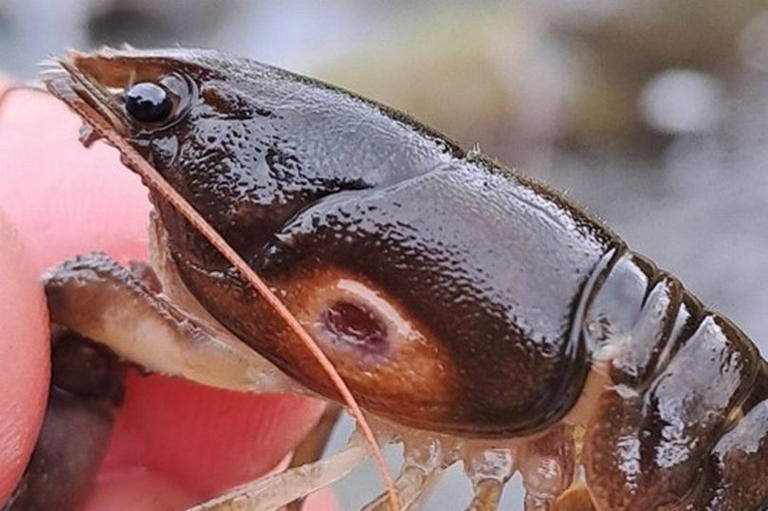The Environment Agency is working with partners to secure the future of the internationally important population in the River Wansbeck in Northumberland.
At the end of September, it was discovered that around 70 of the endangered native species had been found dead in the River Wansbeck catchment, one of the last remaining strongholds of the species.
It has since been established through extensive surveys that native crayfish displaying similar symptoms – unusual orange patches on their shell – are widespread across the Wansbeck catchment.
Photo credit: Environment Agency
Crayfish displaying similar symptoms have also been discovered in the rivers South Tyne and Rede, which are in the neighbouring River Tyne catchment, and the River Pont, which is in the River Blyth catchment.
Over the coming days the Environment Agency will remove visibly healthy native crayfish from the River Wansbeck at the National Trust’s Wallington Estate and from Northumbrian Water’s Hallington Reservoirs, which are near Matfen and in the Tyne catchment.
Females carrying eggs – known as ‘berried’ females – will be kept in tanks at Northumberland Zoo, which has the facilities to rear the young and release them in the future.
Males and females will also be quarantined by the National Trust in tanks at Wallington. They will be monitored for a minimum of three months to ensure they do not develop symptoms before being released into safe ‘ark’ sites in the future.
Combined with work already carried out by the Northumberland Crayfish Partnership, this will help to safeguard the future of the population.
Read the whole story
Covered by the BBC
